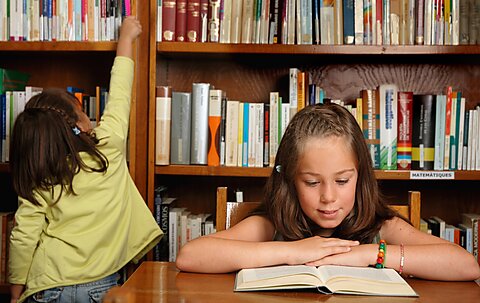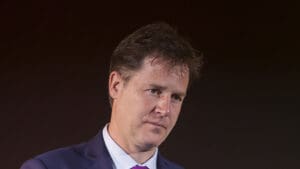With a new school year upon us, a painful phenomenon over the last few years is likely to resurge: battles over books in public schools. A new survey from the Knight Foundation (for which I was on an advisory panel) gives reasons for both hope and pessimism. The survey indicates that book conflicts are not as prevalent as they might seem from frequent media reports, but differences about what books are appropriate for schools are very real.
Perhaps the headline finding of the Knight survey is that, despite all the sturm und drang we have had about book “banning” over the past few years, most people appear to be unaffected, at least directly. Only 23 percent of respondents reported being aware of efforts to restrict books in their community’s public schools, and only 3 percent reported having been active in fighting for or against a book. Contrary to the feeling one might get from media coverage, or even entries on the Public Schooling Battle Map, most school districts have not been wracked by book blowups.
That said, as you will find on the Battle Map, many “reading material” conflicts have been at the state level, potentially pulling everyone in the state into the brawl. Also, roughly one-quarter of school districts having had some discussion of book restrictions is nothing to sneeze at. With 13,318 districts nationwide, 23 percent is 3,063 districts, though apparently very few people get actively involved even when there are challenges.
Consistent with about a quarter of districts experiencing some sort of challenge, 26 percent of pre‑K through 12 parents reported being at least somewhat concerned about their child reading an age-inappropriate book “from” their school. It is not clear how many were concerned about their children reading an inappropriate book in school—for instance, while perusing library holdings—as opposed to checking it out and taking it home, as “from” might imply. So that percentage might be a baseline for worry.
Finally, 78 percent of adults reported being at least somewhat confident that their local public schools select appropriate books. About one-fifth did not feel confident, which would be sufficient to stoke many challenges that get media coverage and give the impression that book battles are pervasive. Still, this suggests most districts probably are not in the throes of explosive book conflicts.
Then things get more divided.
About one-third of respondents supported or leaned toward supporting challenges to books in public schools, generally speaking, and among public school parents the share was 40 percent. Not a majority, but a big chunk of the population.
Then there are the results when specific reasons for book challenges are given. While the large majorities of Americans might not have engaged in challenges and might trust their local public schools to make good choices, there is support for challenges and restrictions when specific concerns are invoked. Foremost, as seen in the following chart, 61 percent of respondents at least lean toward believing it is legitimate to restrict a book deemed age-inappropriate in schools.
Getting more concrete, the next chart shows that whether people think a book should remain in a library if a member of their community challenges it varies appreciably by student age group and specific content. At the low end of book support, only 26 percent of respondents think books that mention sexual intercourse should remain in elementary schools if challenged —a large majority for “banning”—while only 42 percent defend books at the elementary level that talk about sexual orientation, and 43 percent defend books that tackle non-traditional gender identities.
Finally, we can see how polarized we are overall in the chart below, which features yawning gaps between conservatives and liberals, especially concerning books that discuss sexual orientation and gender identity. A staggering 65 percentage points separate conservatives and liberals on whether books that cover nontraditional gender identities should be in elementary or middle schools if challenged, and the gaps are almost as wide concerning sexual orientation.
What we are likely seeing in these results are proximity, specificity, and sorting effects. Generally, people like and trust the institutions they know, which tend to be local. There are dissenters, and that can make for sometimes painful battles. But, generally, local decisions are made by people we might often somewhat know and, therefore, perhaps trust more. Indeed, the survey—which you should read in its entirety—contains questions showing directly that people trust decision-makers closer to them more than ones more distant, with state governments coming in tied for least trusted. Also, as I discuss about the history of American education in The Fractured Schoolhouse, people tend to select into districts populated with others who think like themselves, which has likely averted many conflicts.
Things change when we look at the national picture. People tend to be less trustful of faceless groups and more pessimistic about public schooling generally than their own public schools, perhaps increasing support for challenges when not asked about their specific community. More deeply, as we see when book content is specified, the country appears to truly have serious differences on values-laden issues, especially about sexual orientation and identity.
These survey results suggest that the book battles we’ve seen reflect real national polarization. But local control of public schooling has perhaps mitigated their spread.
















